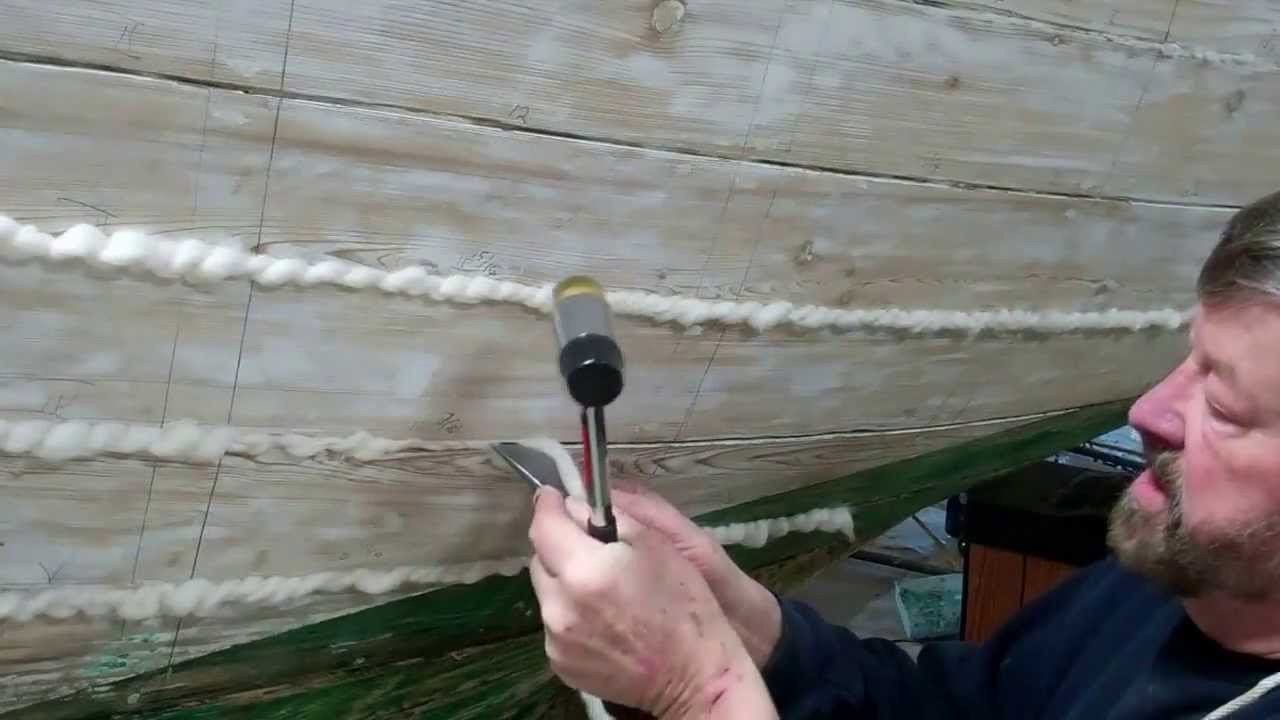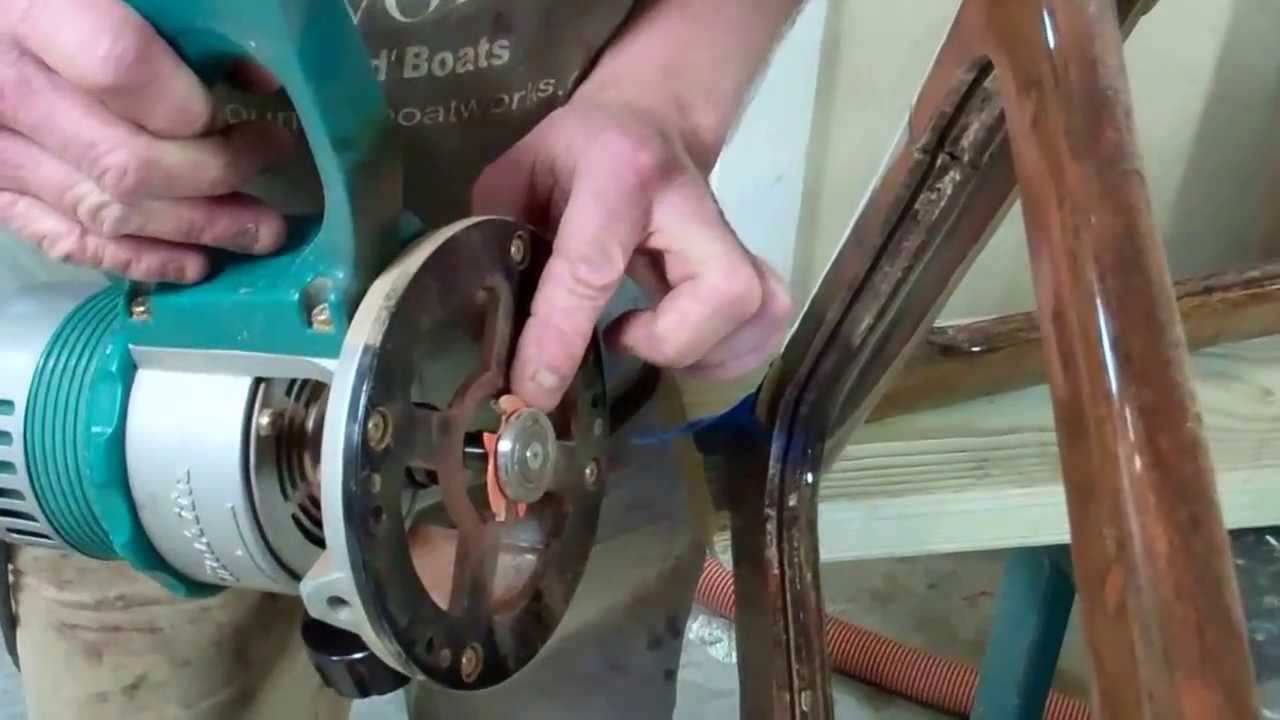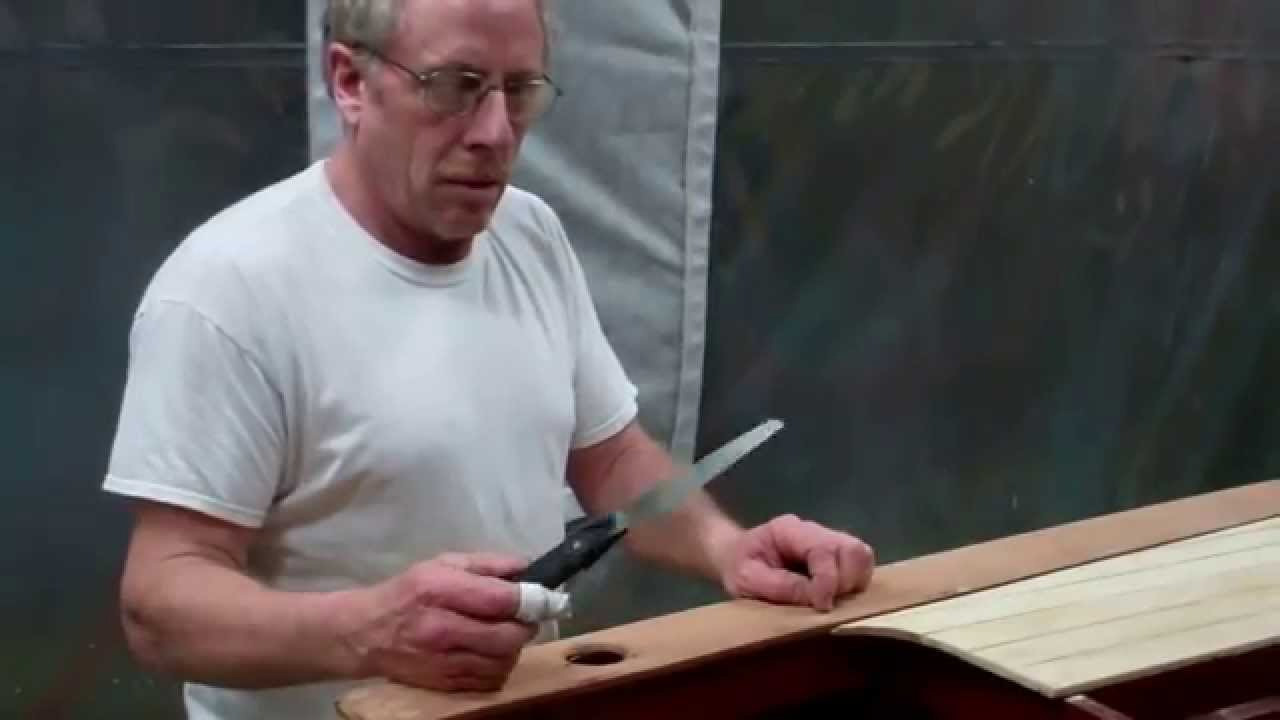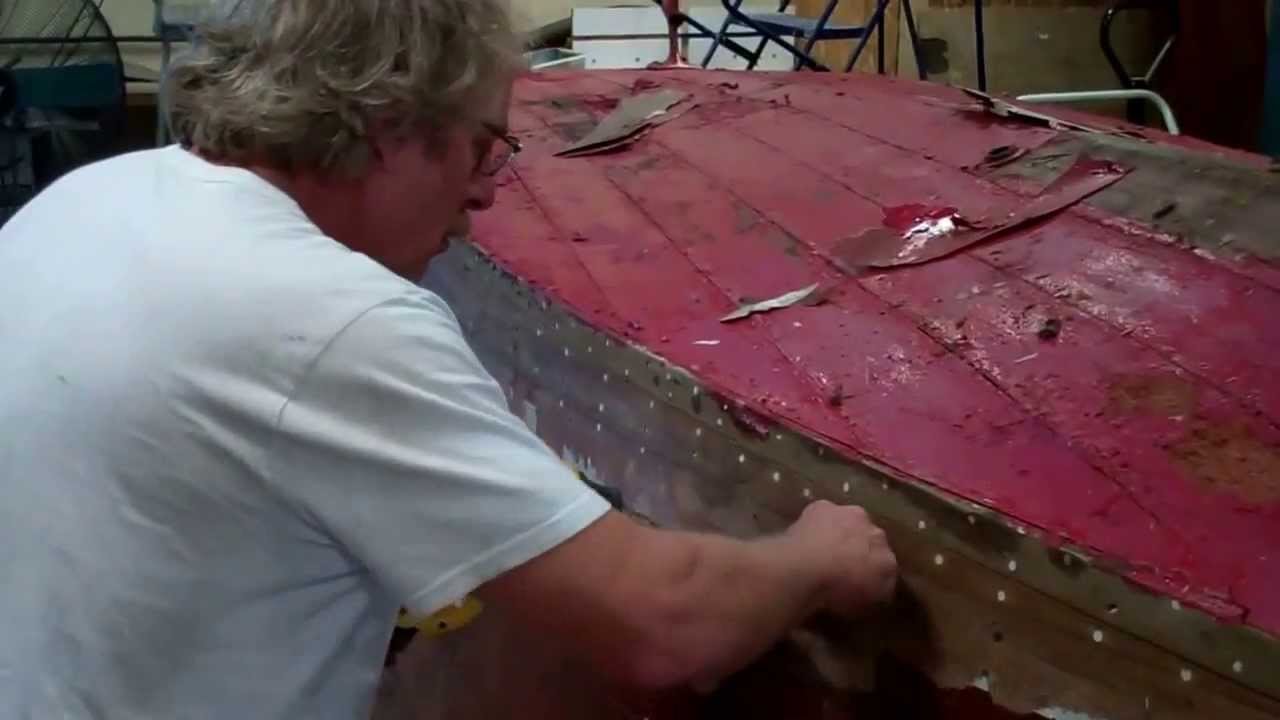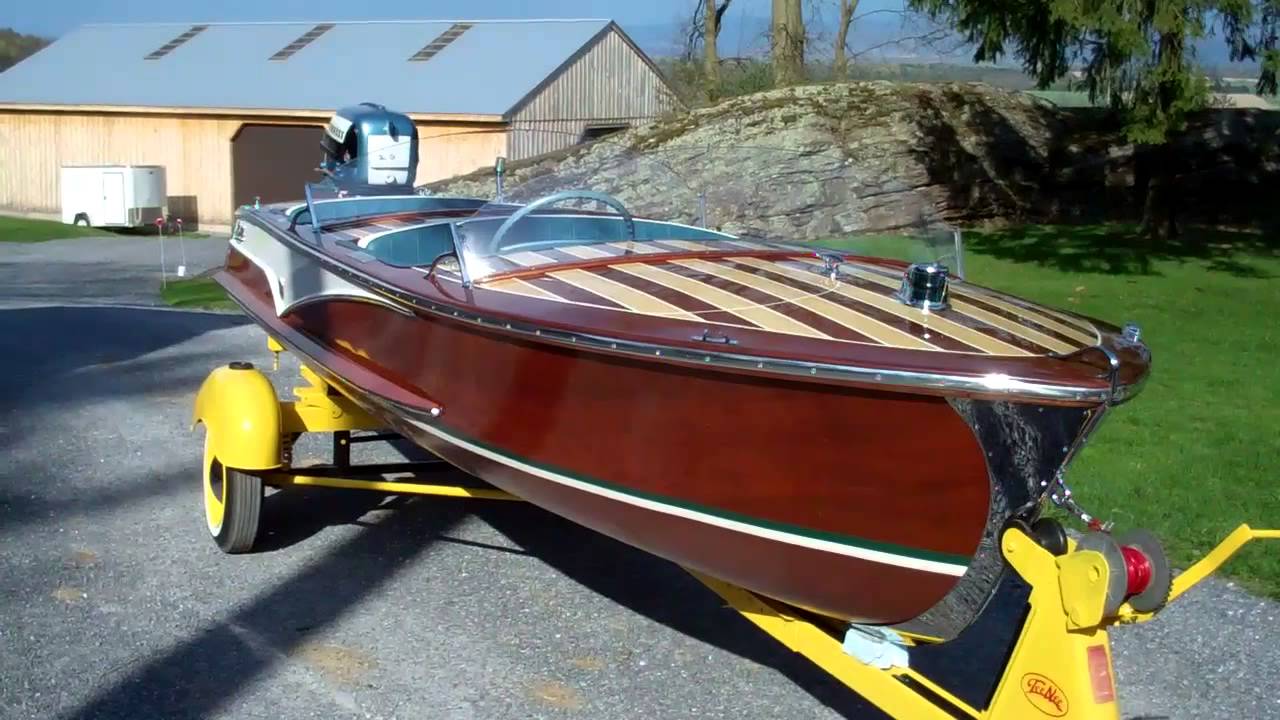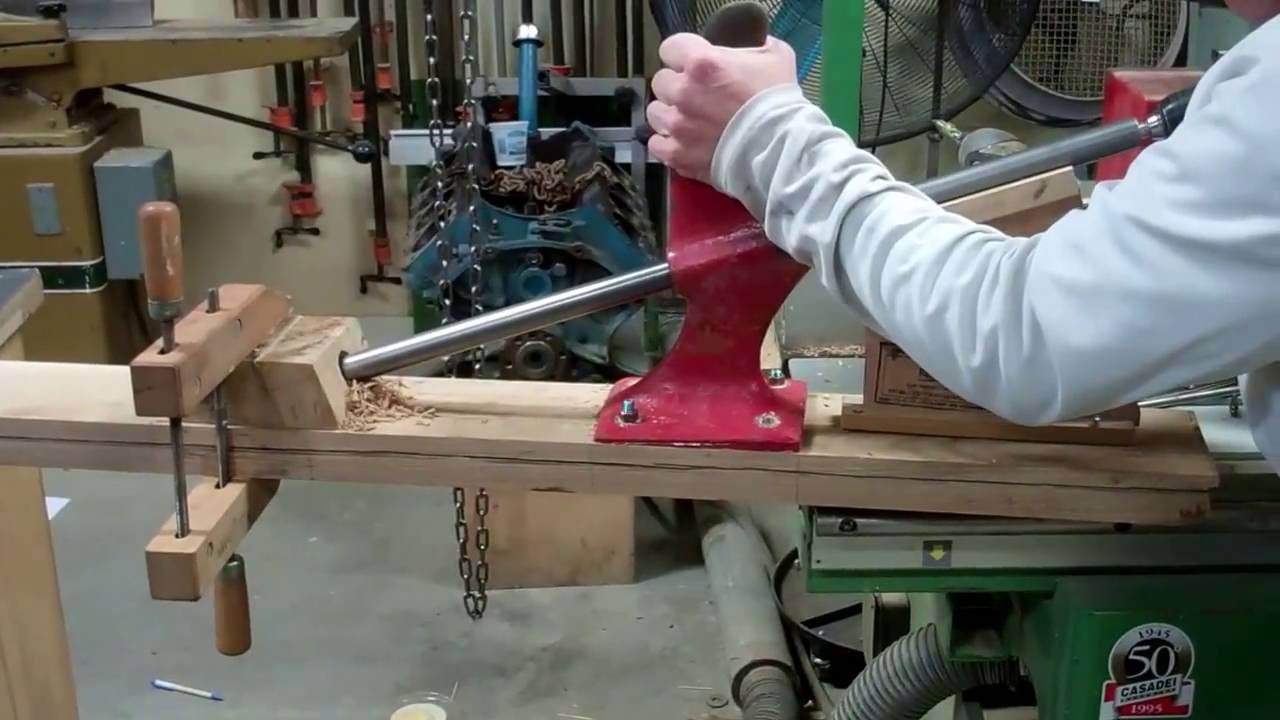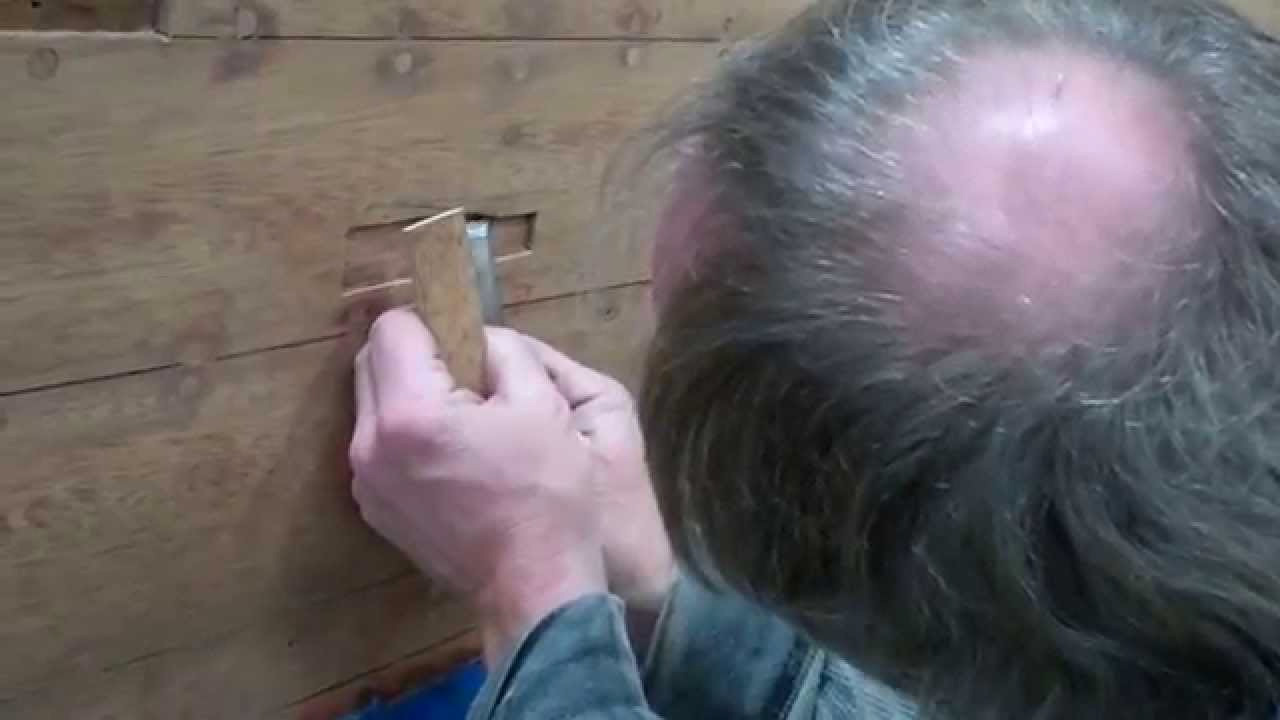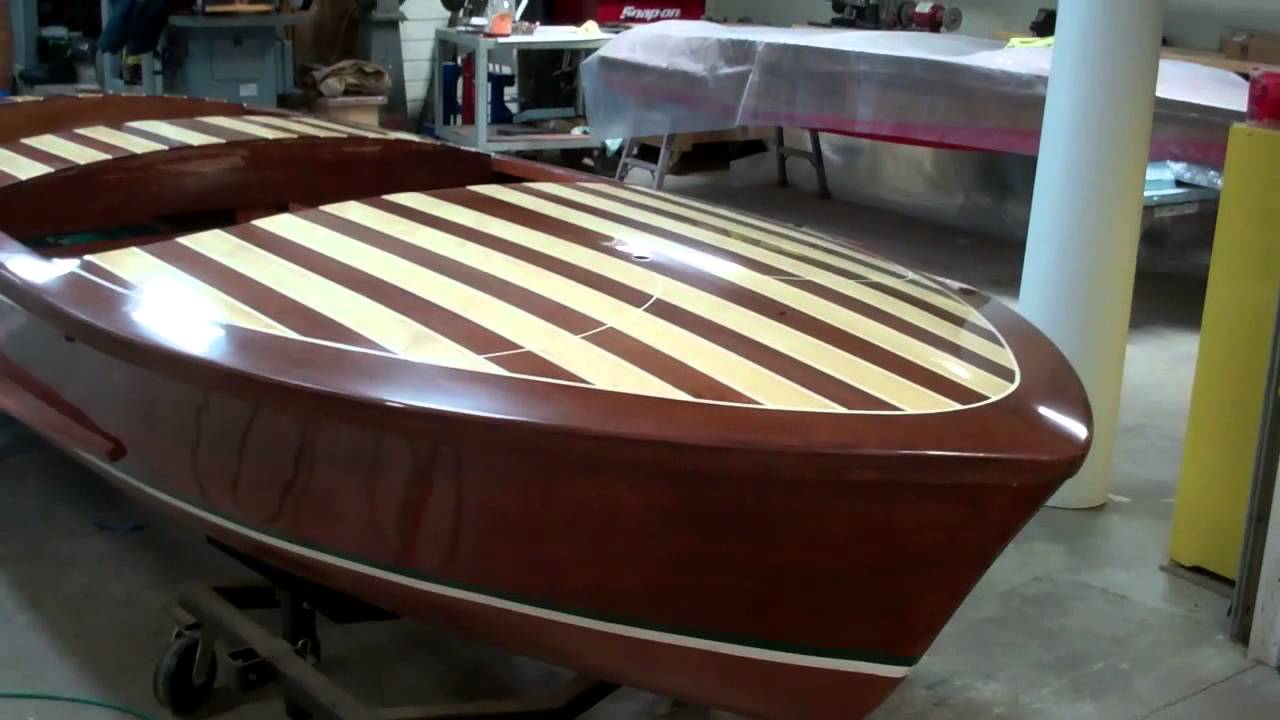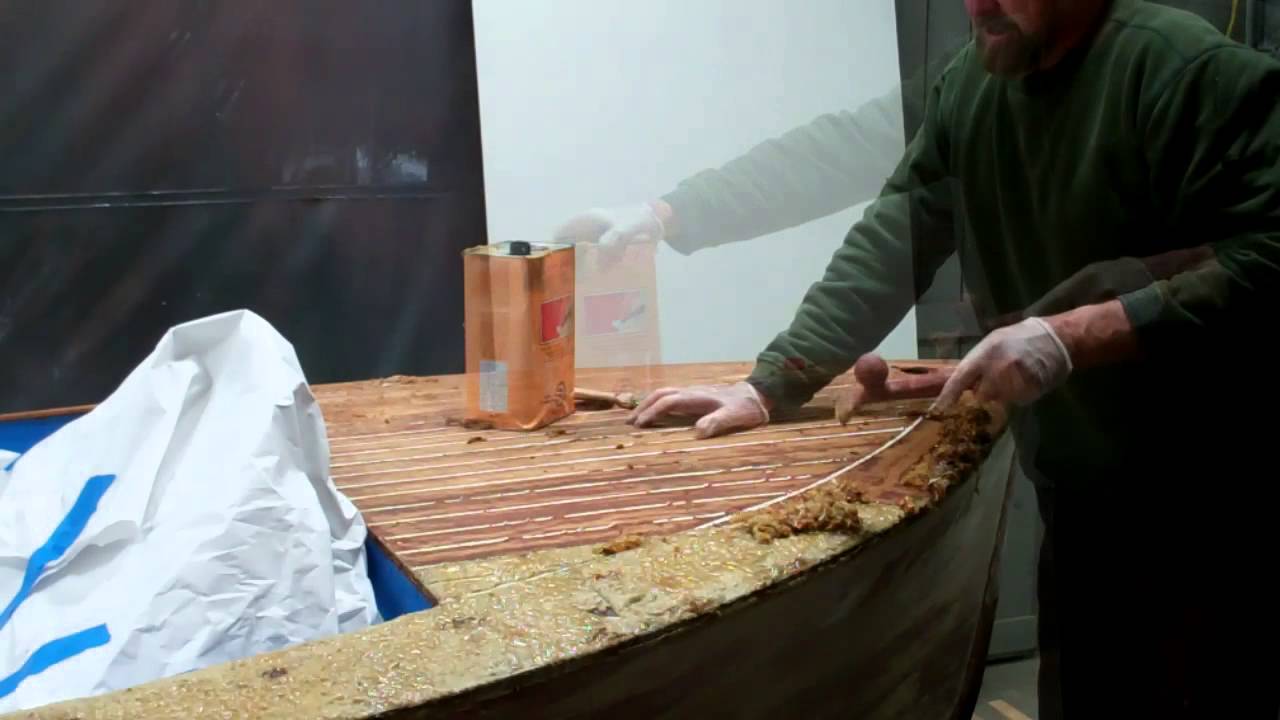Carvel planked construction leaves spaces in the seams between the planks that are traditionally caulked with cotton caulking. Here I am about one-third finished caulking Roxanne’s topsides, and share how I go about this process with you
The tools are very low-tech: two caulking irons, a plastic-headed hammer, a smallish plastic pail and a hank of rope. The cotton caulking arrives packed in one-pound packages of loosely coiled “rope.”
Before the caulking begins, I roll the cotton into balls somewhere between a large orange and a small grapefruit in size. After dropping a couple of balls into the bucket, hanging it around my neck, I grab the hammer and sharper, smaller of the two irons and proceed with step one of stuffing the seams with cotton caulking.
The goal in this first step is to create what looks all the works like braided rope. The cotton passes through the palm of my hand and beneath the iron, as I successively capture approximately one-inch-long lengths against the plank below the seam, slide it up into place and drive it home with a couple of taps of the hammer. It is amazing the rhythm that begins to take hold: grab, slide, tap, tap; and over and over until the entire length of the seam is filled. Then, using the blunter, wider iron set at an angle, I attack the “rope” and drive it home until the cotton disappears into the seam.
Once all seams are filled, the cotton and edges of each seam must receive a copious coat of oil-base paint, preferable one that is consistent with whatever the final topside paint will be, We will use Interlux Pre-Kote on Roxanne since our topcoat will be Interlux Premium Yacht enamel 220 — semi-gloss white.
Before we can begin our finish painting, however, we will fill and fair all of the seams using Interlux white Seam Compound above, and Davis Slick Seam below the waterline.
How to Rout the Windshield Seal Dado Into a ’55 Lyman Windshield
Our attention turns to a task on the 1955 20′ Lyman runabout that, in truth, has been hanging “heavy, heavy over our heads” for some time. The windshield glass on old style Lymans of which this one is an example was originally secured with extruded aluminum stops that are no longer available.
Since these stops were secured with small oval-headed brads, Lyman never cut dado channels in the rabbets. Indeed, this boat’s glass was secured with glazing points and some sort of window caulk that had been stained a “Lymanesque” brown when I purchased her.
Conversations with Tom Koroknay and members of the New England Lyman Group (NELG) all pointed to only one solution: rout the dado into the rabbet and secure the glass with standard, single-spade, white Lyman molding.
“All” we needed to do was rout the dado. The solution, we hoped, would be provided by a 3-fluke router bit slot cutter by CMT. We placed the bearing on the outer end of the shank, with the cutter inside it. Shim washers positioned the cutter precisely so that the glass fits behind the slot and the spade can be pushed into it.
Everything looked good on paper and also on the test piece we made, but that windshield frame, especially the top sections over the front sheets of glass, just looked so fragile. We hedged our bets by building a rough jig to which we could mount the frame using its mounting holes.
In the end, someone had to grab the router and go. John stepped up and masterfully guided the router around all four openings. We have now installed the two front sheets of glass and will install the whole thing on the boat before adding glass to the wings.
Phew! Fabricating an entire windshield would NOT have been fun.
1967 Century Palomino: Removing Bungs Flush with Planking
This 1967 Century Palomino’s decks were completely released so we could gain access to the areas beneath. With all of the framework complete, and everything sealed and coated in multiple coats of Sandusky Paints Mahogany Bilge paint, the deck planking has been re-fastened with silicon bronze Frearson head wood screws
Next we inserted mahogany and Avodire bungs, making sure that each bung’s grain was aligned with that of the plank. Gorilla Glue ensures a waterproof bond is established
But then we have a sea of bungs standing proud of the deck. Each must be cut flush to the planking. This clip is a response to the many questions we have received about how we do it at SMB. Well, we tried all manner of high-end chisels, honed to a razor’s edge. No matter how carefully we sliced through each bung, some would break off below the plank’s surface, which meant digging them out and inserting new bungs
And then there would be the inevitable, “Oh s….!” Someone had slipped and gouged the plank. No matter how good you get at it, filling a gouge means a bruise remains, one that seems to jump out at anyone who looks carefully at the surface
And it was slow and tense.
Now we are standardized on the VERITAS flush-cut hand saw. It is incredibly sharp, and with zero offset to the teeth, these saws cut the bung off precisely at the surface without marring it. Time means cost to our clients, so the fact that we can excise 400 or so bungs per hour with these saws also makes us more competitive
We experimented with less expensive brands, like Stanley, but in every case rejected them because at least one tooth was offset just enough that we got scratches in our test planks.
1946 Gar Wood Ensign Please Do NOT Fiberglass Wood Boats!
Here is the next installment on our 1946 GarWood Ensign restoration project. With everything removed from the hull, we have flipped her onto boat dollies in preparation for removing the planking, repairing all the failed, rotted and broken framework beneath them and then installing a 5200 bottom.
This boat spent most of her life on Squam Lake or Little Squam Lake in New Hamspire.
That these lakes have a well-earned reputation for unforgiving, rocky bottoms is evidenced by all the damage that this hull has suffered below the waterline. Indeed, the previous owner(s) installed iron strapping along the stem and forward sections of the keel. Then there is the through-and-through fracture of the keel just forward of the prop shaft tunnel.
Removing the fasteners and these straps was simple.
But then comes the fiberglass. Yes, someone fiberglassed the entire bottom, the chines and up the topsides as much as 8 inches. We “get” to remove all of it. Not doing so makes removing bungs and bottom plank fasteners all but impossible, never mind the fact that we are doing our utmost to preserve the original planks.
We have tried using chisels, which worked well along the keel and garboards, where sheets of fiberglass peeled off with relative ease.
However, the fabric-infused resin remained, and presents us with a challenge of much greater magnitude. It will be incredibly tedious and time-consuming, but using a combination of heat guns and sharpened putty knives seems to be the best solution. The challenge here is not gouging 60 year-old wood with the hot, sharp putty knife. We are also running into large areas of rot where water managed to breach the fiberglass skin and soaked the wood in a largely anaerobic environment.
We will soldier onward, but want to make a plea to all woody owners and preservationists, “Please, please do not fiberglass your wood boats!” Doing so is a lose-lose proposition, especially for these irreplaceable artifacts of the past.
1958 Cadillac Seville Emerges From Preservation
Cadillac Marine & Boat Company of Cadillac, Michigan started in September 1953 as a wholly owned subsidiary of Wagemaker Company. Boat builder Wagemaker of Grand Rapids, Michigan also owned U.S. Molded Shapes, Inc. and Mr. Raymond O. Wagemaker was president of all three firms. The Cadillac Chamber of Commerce was instrumental in luring the boat firm to the city. Across town was a branch plant of Chris-Craft that opened up in 1941. Cadillac made aluminum fishing boats and runabouts. U.S. Molded Shapes made molded veneer boat hulls for Wagemaker which finished them and marketed the boats as Wagemaker Wolverine. Cadillac also made wooden boats with hulls from U.S. Molded Shapes. During 1958-1960, the Company designed and produced a small number of wood-hulled boats, and at the top of the line was the double-cockpit, “Model 505”. The Cadillac Seville. She is a 15′ molded plywood runabout powered by a special edition, 30 HP Evinrude outboard engine. We acquired this boat out of a barn in late 2010, and began actively preserving her in late 2011. That process was completed today, May 2, 2013, as she, perched on her 1959 Tee Nee tilt trailer, emerges from the Snake Mountain Boatworks’ preservation shop and moves into our showroom. She is hull number M5883, which tells us that she was the 83rd boat produced by Cadillac Marine and Boat Company in 1958. While the video’s narration suggests that she is the 83rd of 87 Cadillac Sevilles produced in 1958, further research informs us that, at a price of $1,245 FOB the plant in Cadillac, MI, very, very few orders were made for this then super-expensive little boat. So M5883 was the 83rd boat delivered by the company in 1958, but that included total production of mostly aluminum and very few molded plywood hulls. True to her name, Cadillac Seville, she is long on luxurious adornments, from her fantastic cutwater to her bold “Cadillac Seville” name plate. Even the floor-mounted shifter and throttle are unusual. Enjoy meeting this fantastic example of what was considered “haute design” for vehicles of all sorts in the late 1950’s.
1957 Century Palomino Applying Filler Stain
We achieved a major milestone in our 1957 Century Palomino preservation project today. The hull is now stained in the traditional two-tone Palomino manner. Blonde Avodire (African white mahogany, graces both the fore and aft decks, save for the crescent just aft of the windshield, which is stained to match the covering boards. We used Interlux IInterstain thinned about 10% and applied it with plain old chip brushes. Besides being thinned to a consistency that approximates house paint and applying it liberally on the surface, t here are two keys to achieving a stained surface that is uniform and free of blotches.
First, is being patient, but not too patient. Way too many stain teams assign application to one person while the rest follow immediately behind scrubbing stain off the surface. Doing so prohibits the stain from penetrating the wood fibers. As hard as it might be, wait until the stain “flashes,” at which point the surface begins taking on a dull look. Do not wait too long, however, as the stain continues curing, and if you wait too long, scrubbing the surface clean becomes a nightmare.
Now it is time to begin scrubbing across the grain, not with the grain. A filler stain is designed to fill the valleys in the grain left by sanding with the grain to 80 or 100 grit. (Sanding the surface smoother than 100 grit max robs the surface of the ridges and valleys — the teeth — that the stain will fill.)
Scrub, scrub, scrub. Change your cheese cloth or terry cloth toweling when it becomes caked with residue. (Be sure to drape the used rags over a close line, or something similar to avoid spontaneous combustion. They are safe to discard only when they become stiff as a board.) How do you know you are finished? The surface will begin feeling smooth and almost slippery. And your towels will come away nearly clean when you burnish across the grain with them.
Staining is anything but glamorous, but nothing can do more harm to your project than scrubbing too soon or too little. The varnish will amplify every blemish and every blotch a hundredfold.
How to Bore a New Prop Shaft Hole – 1946 Gar Wood Ensign
The original keel in this 1946 16′ Gar Wood Ensign had failed completely as we have chronicled in earlier clips on this project. Drilling new rudder shank and propeller shaft holes, and especially the latter, represent a particularly daunting task. If the prop hole is misplaced and/or misaligned, the shaft log will not receive the prop shaft symmetrically, and only bad things follow there from.
Today John and RJ decided that the moment had come, and, with John narrating, this clip introduces you to how we meet these challenges at Snake Mountain Boatworks.
What you will not see in the video is John’s rather ingenious solution to the reality that the Forstner bit tends to cut a tunnel having somewhat ragged and rough walls. John produced silky smooth walls by wrapping the prop shaft, first in progressively finer grits of sandpaper, beginning with 40 and ending with 100
The keel blank is now ready for shaping and fitting to the hull, which we will share with you in the coming days and weeks.
How to Make a Deep Gouge Disappear with a Dutchman
Green Mountain Buoy “bumped” into something at some point that left an ugly gouge – almost 3 inches by 1 inch by 3/8 inch deep about mid-way along her port side. Using a plunge router, we were able to create an purposely irregular shape that would be filled with what is called a Dutchman patch – a piece of wood that is shaped and shaped until it fits precisely into the declivity we have created with the router.
Fitting the Dutchman perfectly would have been much easier had we simply routed out a uniform rectangle with straight sides and 90-degree corners. But such a patch would be virtually impossible to hide.Selecting a piece of planking that had been removed from the topsides for replacing allowed us to select wood of the same age and similar grain and coloring characteristics, which is a great strategy for hiding the patch even further.
Here we follow John LaFountain as he first patiently shapes the insert, glues it in place and then sends it in a day later once the Gorilla glue has cured.
Yes, the patch IS still visible at the end of the clip, but once we have bleached, stained and varnished Green Mountain Buoy, I will challenge you to find the Dutchman.
1958 15′ Cadillac Seville – Preservation Nearing Completion
This 1958 Cadillac Seville is an early example of cold-molded plywood hull construction. She has two cockpits, complete with two windshields. Her deck planks alternate in mahogany and avodire, which produces a striking result. Now that all the structural and most of the cosmetic work has been completed, we can begin reconstructing her. Wait until you see her original Evinrude outboard with matching Evinrude blue upholstery her Caddy Seville crowns and chrome moldings!
Stripping Green Mountain Buoy’s Foredeck
Let’s agree, stripping varnish or paint is just plain WORK! But it is the first step in saving an old wooden boat’s decks, gunwales and topsides, so here we are, almost finished stripping Green Mountain Buoy’s foredeck, while RJ, who is out of the shot, toils with the starboard topsides. Next comes releasing the white material in the seams before we can begin sanding the decks. Happily, we have discovered that previous work on GMB included digging out and replacing the original material with restorer-friendly silicon caulk.
The seams are next, but that’s also the subject matter of the next video report. Yes, she is ugly now. Just wait. Soon she will jump out at you. I promise.

